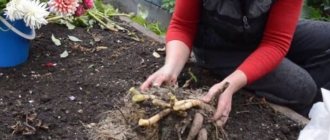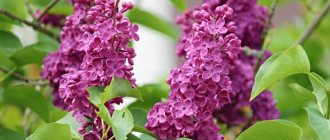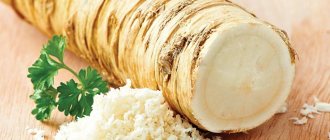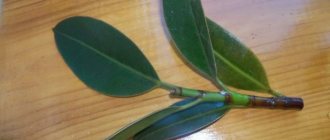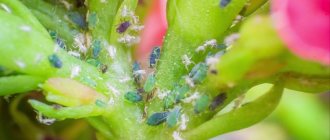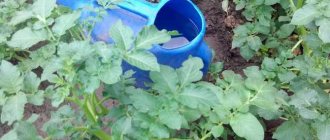Author: Natalya Category: Garden plants Published: January 05, 2019Republished: February 6, 2019Last edits: January 20, 2021
- When to plant
- Growing conditions
- How and when to collect seeds
- Cleome Spinosa
flowers (lat. Cleome), or cleome , belong to the genus of annual or biennial plants of the Cleome family, growing throughout the globe in areas with warm and temperate climates and numbering about 70 species. For the peculiar shape of the inflorescences, the Germans call the cleome flower “spinenpflanze”, which means “spider plant”. Unusual brushes look like an explosion, a splash of champagne - you may not like this plant, but it is impossible not to pay attention to it. The spectacular beauty of the flowers, the strange smell, as well as the fact that the cleome plant blooms all summer from June to September - these qualities are increasingly attracting the attention of flower growers.
Planting and caring for cleome
- Planting: sowing seeds in the ground - before winter or in spring. Sowing seeds for seedlings - at the end of February, planting seedlings in the ground - at the end of May or early June.
- Flowering: from June to September.
- Lighting: bright sunlight.
- Soil: fertile, neutral reaction.
- Watering: only in extreme heat, but plentifully.
- Feeding: once every two weeks with complex mineral fertilizer. It is better to feed weak plants by leaves.
- Reproduction: seed.
- Pests: not damaged.
- Diseases: gray rot.
- Properties: the plant has an unpleasant, not at all floral odor.
Read more about growing cleome below.
Botanical description
The root system of cleome is powerful, the strong stems are branched, covered with short glandular hairs and reach a height of one and a half meters. The leaves are light green, alternate, in some species covered below with small spines, simple or compound - with entire-edged linear elongated leaflets in the amount of five to seven; the apical leaves are entire and small. Regularly shaped flowers of white, purple, yellow or pink are collected at the tops in racemes; long stamens look like spider legs.
The fruit of cleome is a single-locular, pod-shaped polysperm, up to 3 cm long. Many lovers are puzzled by the not entirely floral aroma of cleome, but in the garden, in the fresh air, it is not noticeable at all, but it repels harmful insects. The fact is that this smell in cleome’s natural habitat areas attracts small bats that pollinate the plant.
Features of cleome
Cleome has a very powerful root system. Branched strong shoots, on their surface there is pubescence consisting of short glandular hairs. The height of the bush can reach up to 150 cm. The greenish alternate leaf plates of some species have small spines on the underside. Leaves can be simple or complex: they consist of 5 or 7 entire elongated linear leaflets. The apical leaf blades are small and entire. The apical racemose inflorescences consist of flowers that have a regular shape and are purple, pink, white or yellow in color. The flowers have relatively long stamens that look like spider legs. The fruit is a unilocular polysperm, pod-shaped, and can reach about 30 mm in length. Most amateur gardeners do not like the floral smell of cleome, but in an outdoor garden it is completely impossible to smell it, but it can repel pests. This unusual aroma is necessary for such a flower to attract small bats in the wild, which are its pollinators.
Flowers bloom beautifully for the garden. Cleome from seed to flowering!
Growing cleome from seeds
How to sow seeds
Cleome reproduces by seeds. How to grow cleome from seeds? They can be sown directly into the ground in the spring or before winter - in November-December, but it is best to use the seedling method of seed propagation. So, when to sow cleome for seedlings? Cleome has a long growing season, and if you want to collect ripened seeds in the fall, then you need to sow seedlings at the end of February. Before sowing, in order to speed up the process of germination, cleome seeds are soaked for 12 hours in a solution of Zircon or Epin (2 drops of the drug per glass of warm boiled water), then sown in a shallow container with seedling soil (garden mixture, humus and sand in a ratio of 2: 2:1), and sprinkled on top with a 1.5 cm thick layer of the same soil and covered with glass to create a greenhouse effect.
- Tips for growing ageratum from seeds
In the photo: How cleome blooms
Seedling care
Cleome does not germinate from seeds quickly, after 2-3 weeks, but after emergence, the seedlings are immediately transferred to a bright windowsill and provided with additional lighting in the evenings. Moistening is carried out as needed - not often, but abundantly, allowing the soil to dry out between waterings.
To prevent root diseases, seedlings are watered once with a weak solution of potassium permanganate.
When the seedlings have a pair of true leaves, they are planted in peat-humus pots, buried in the soil up to the cotyledon leaves. Two weeks after picking, you can feed the seedlings with complex mineral fertilizer in a weak consistency, and then apply fertilizer every two weeks. Rotate the pots from time to time relative to the light source so that the seedlings do not develop one-sided.
Features of cultivation
In order for the seedlings to be healthy and disease-resistant, soil and seed preparation should be done at the end of February. First of all, you need to know how cleome is grown from seeds and when to plant this plant.
Preparing the soil and site for planting
Kalanchoe Blossfeld - features of flower care
Seeds are planted in planting containers or peat pots with loose nutrient soil. The substrate can be bought in a store or prepared from equal parts of humus, sand and turf. Before planting, seed material is soaked in special compounds for protection and faster germination. The distribution over the surface should be uniform. They are sprinkled with a small layer of soil on top.
Important! To prevent seedlings from dampening off, you need to remove the film from the containers for ventilation and moisten the soil as necessary.
Under favorable conditions, cleome seedlings will hatch within 10-14 days after planting. Next, the containers are placed in a lighted place. If this is not the case, additional lighting is done.
Growing seedlings
The nuances of growing seedlings
For normal development of shoots, they need to be watered regularly to keep the soil moist. Another rule that must be followed to grow cleome is watering young seedlings with a weak solution of potassium permanganate. It will kill fungal spores and viruses and protect the plantings.
After the appearance of the second pair of true leaves, the plants begin to pick. They do it carefully. After a couple of weeks, the flowers are fed with complex mineral fertilizers.
You should know! To ensure that the sprouts develop evenly and do not stretch, the containers are regularly rotated relative to the sun.
The cleome plant is planted in open ground when the threat of frost has passed. It is pre-hardened. You can directly sow the seeds into the ground at the end of May or late autumn. The depth of the grooves in this case is 15 mm, and the distance between the rows is 35 mm.
Sowing seeds in the garden
The instructions for planting seeds in open ground in the spring are as follows:
- Soak in a stimulating preparation (zircon, epin and others).
- Dig up the area, make a bed and furrows in it. The depth of the ditch is about two millimeters. The distance between them is 25-30 cm.
- Distribute the seeds evenly over the surface and cover with a layer of soil. Place covering material on top.
- After germination, it is removed.
- When the first leaves appear on the plants, they need to be thinned out, leaving them at a distance of 50-70 cm from each other.
Planting cleome
When to plant
When the return frosts pass, the seedlings can be planted in the ground. Usually the time for planting occurs at the end of May or beginning of June. Select a sunny area without strong drafts for cleome seedlings, and they don’t need anything else, although cleome grows better on fertile soil of a neutral reaction, with good moisture, than on poor dry soil. Therefore, if the soil in the area for cleome leaves much to be desired, add a bucket of rotted compost and two tablespoons of granular flower fertilizer per square meter when digging.
In the photo: Growing cleome in the garden
How to plant
Before planting seedlings, for better rooting in open ground, spray the seedlings with a solution of the Epin-Extra stimulant with cytovit microfertilizer, as indicated in the instructions. Planting cleome in open ground is carried out with peat-humus pots at a distance of 50 to 70 cm between specimens. This is done so that the planting does not thicken, the plants are not affected by pests and diseases, and the flowering is abundant and bright. After planting, water the cleome under the root with a solution of humate.
How to plant hydrangea - practical advice
- Poppy: growing from seeds, types and varieties
Cleome in landscape design
This interesting flower is becoming increasingly popular due to its spectacular appearance, large inflorescences and fairly simple care. The plant combines well with other species and is suitable for growing next to perennials and annual flowers. The tall species looks no less impressive than popular plants for the garden and dacha: Asters, Tulips, Evening Primrose, Zinnia, Nemesia, Gazania, Ageratum, Purslane, Bear's Ear, Nemophila and others.
On a note:
- Cleome adds bright accents to a boring area; tall stems with large ball inflorescences hide an unsightly fence or an unkempt garden area. A screen made of natural decor is an excellent option for areas where there is no ideal order yet, and the owner is just arranging the territory.
- Interesting combinations - Dicentra + Cleome: both types have original flowers and a height of about 1 m.
- White varieties go well with Lobularia, Rose and Cosmea of the same color.
- A flowerbed has a spectacular appearance, with Cleome planted in the background and low plants in the foreground: Sweet tobacco or Lavatera.
- The bright colors of Cleome look more beautiful against the background of flowers with buds of cool shades. Landscape designers combine the South American look with Echinacea, Forest Sage, Liatris, Verbena.
The attractive Cleome flower refreshes the country house, garden, gardens and flower beds near a private house. Bright color spots of pink, dark purple shades and delicate compositions of inflorescences with light buds always attract attention. The plant repels pests and rarely gets sick, which makes the work of flower growers easier.
Video - recommendations on growing Cleome from seeds and caring for flower crops in open ground:
Cleome care
Growing conditions
Caring for cleome is simple: water only in hot weather, infrequently, but generously, feed once every two weeks at the roots with complex fertilizers such as Fertika-lux or Fertika-combi, diluting two tablespoons of fertilizer in 10 liters of water. A weak and diseased cleome bush should be fed leaf by leaf by spraying with a solution of one teaspoon of fertilizer in three liters of water. If you can’t wait to see cleome bloom, spray it with Zircon solution before the formation of buds at the rate of 1 ml of the drug per 1 liter of water.
In addition to these manipulations, growing cleome involves removing weeds and loosening the soil if you are too lazy to mulch it after planting.
In the photo: Unblown cleome inflorescence
Pests and diseases
Due to the aroma of cleome, which is far from floral, insect pests do not approach the plant. And it gets sick very rarely, only if you did not plant it close to groundwater and did not water it without any measure, but since this is unlikely to happen, we can assume that cleome is invulnerable.
Protection from pests and diseases
The specific smell emitted by the leaves and stems of Cleome is negatively perceived by insects. For this reason, aphids, scale insects, thrips, cutworms, spider mites and other pests avoid the plant. If you plant Cleoma as a hedge or to separate zones in your summer cottage, then parasitic insects and mites will probably disappear from neighboring plantings.
The plant rarely gets sick. Most often, flower growers are faced with rotting of the underground part, withering of stems and leaves. The reason is the swampiness of the soil against the background of groundwater lying close to the surface or a violation of the irrigation regime.
What to do:
- Sick plants are disposed of and factors that cause moisture accumulation in the substrate are eliminated. Plants should not be flooded. You need to check the area: perhaps the reason for the rotting of the roots lies in stagnation of water after rains.
- Treatment with fungicides is a mandatory step in the treatment of fungal diseases. For open ground flowers, the following products are used: Fundazol, Abiga-Pin, Bordeaux mixture, Profit Gold, Maxim, Tanus, Fitosporin, Skor, Baktofit, Falcon, colloidal sulfur.
- It is imperative to follow basic standards for protecting the body when working with fungicides, even those based on biological products. Rubber gloves, closed clothing, a respirator, a scarf or cap, and plastic goggles are needed to protect all areas of the body where drops and vapors of drugs can get in.
Cleome after flowering
How and when to collect seeds
Since the cultivation of cleome flowers is carried out exclusively by seeds, it is advisable in the fall, when they ripen, to collect the seeds for sowing before winter or in the spring. You can determine the degree of maturity of the seeds by eye: they are round, up to 1.5 mm in diameter, yellow or brown, depending on the color of the flowers. In order not to miss the moment when the pod bursts and the seeds spill onto the ground, it is better to place several pods in gauze bags, and then the seeds will fall not on the ground, but in them.
In the photo: white cleome
Cleome in winter
Cleome is an annual plant in our climate, so after frost it must be disposed of. In November or December, you can sow the seeds you collected in the fall into the soil to a depth of 1.5 cm and cover the crops with spruce branches, which you will remove with the arrival of spring, so that the seeds that have overwintered in the soil can begin to grow.
Types and varieties
Only two types of plants have been introduced into culture so far - Hassler's cleome (Cleome Hassleriana) and prickly cleome (Cleome Spinosa) . These two tropical South American species are very similar, differing only in the color of the flowers, so among gardeners, for convenience, it is customary to call both species Cleoma spiny.
Cleome Spinosa
These species are also used to create new varieties and hybrids by crossing. We offer you an introduction to the most popular varieties of cleome prickly:
- Eukomis: growing and caring for the garden
In the photo: Cleome Hassleriana
- Hellen Campbell – white cleome;
- Rosakenigin – pale pink cleome;
- Pink Queen and Rose Queen are also varieties with pink flowers;
- Golden Sparkler is a dwarf variety with yellow flowers;
- Giant Pink Cusen - large dark pink flowers;
- Sparkler Lavender - light purple inflorescences;
- Violet Queen is a cleome with inky purple inflorescences.
The most popular variety is the prickly cleome Cherry Queen, up to 60 cm high, with fragrant flowers 2-3 cm in diameter, of an original shape, on long stalks.
In the photo: Cleome Spinosa
Cleome Hassleriana
As for Hassler's cleome, the Champagne Splash variety, bred on the basis of this species, is grown in culture. The height of the variety is 120 cm, white or pink flowers with a diameter of 3-4 cm are collected in an inflorescence-brush up to 20 cm in diameter. Blooms from July until frost.
Cleome is used as a solo plant and in groups with annuals such as lavatera or fragrant tobacco. Due to its high growth, cleome is often grown as the background of a flower garden or hedge.
